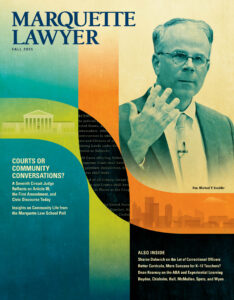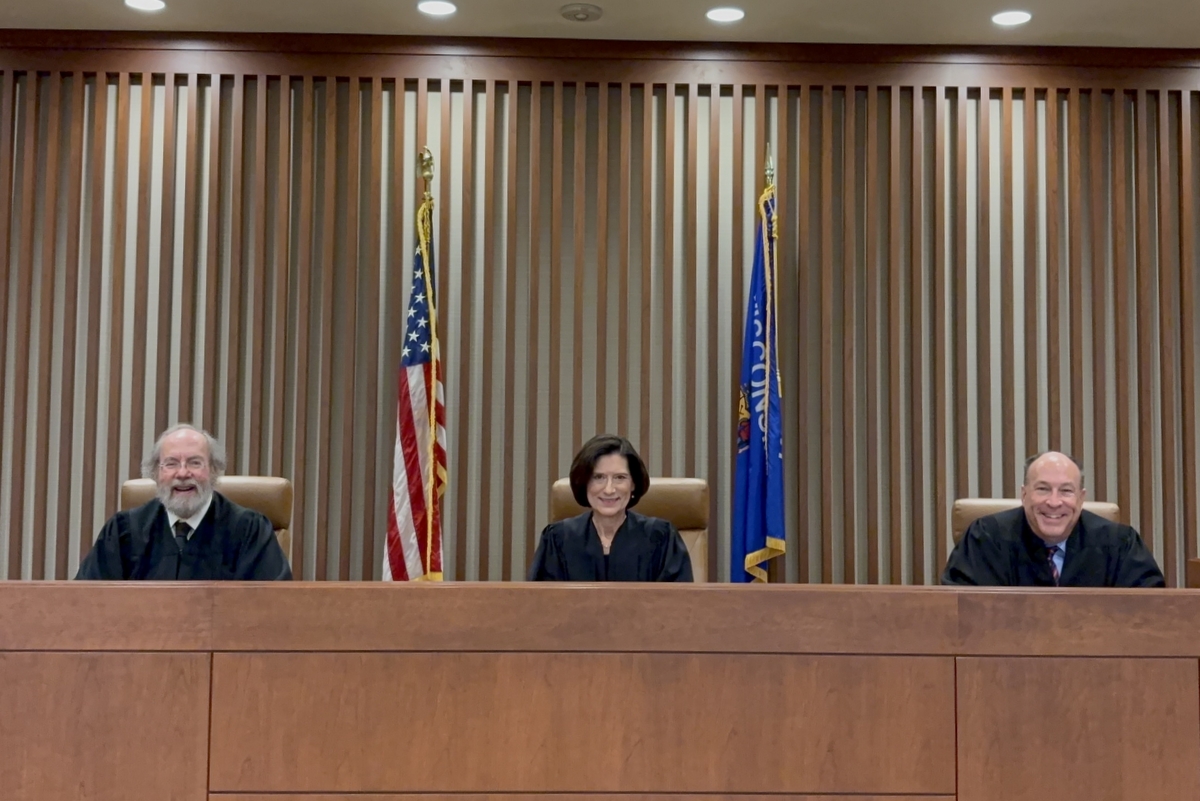Lessons in the Law and Civic Life
 What should be the goal of a law school? Obviously, educating students to be excellent lawyers is at the core. But the life of a law school goes far beyond the walls of a building and what happens in classrooms.
What should be the goal of a law school? Obviously, educating students to be excellent lawyers is at the core. But the life of a law school goes far beyond the walls of a building and what happens in classrooms.
The Fall 2025 issue of the Marquette Lawyer magazine gives insights into how far the reach of a law school can and should extend. From the dignified proceedings of appellate courts to the sometimes-contentious atmosphere of school board meetings, from the harsh insides of prisons to the world of water policy, from kindergarten through twelfth-grade classrooms to enjoyable vacations—they’re all part of this issue. And there’s plenty more about life inside Marquette Law School and legal education.
The cover story of the magazine, headlined “Courts or Community Conversations?,” sets the theme. In his E. Harold Hallows Lecture at Marquette Law School on March 3, 2025, the Hon. Michael Y. Scudder, a judge of the United States Court of Appeals for the Seventh Circuit, discussed some of the constitutional limits on bringing issues before federal courts. He expanded on this by suggesting that constitutional limits on jurisdiction protect First Amendment interests and the value of democratic self-government, ensuring that state institutions such as city councils and school boards remain at the center of debate and decision.
The magazine offers a text of Scudder’s lecture and amplifies on his theme with two companion pieces: Professor Charles Franklin, director of the Marquette Law School Poll, provides insights from recent Marquette Law School Poll results on the involvement of people across the nation in civic life, including participation in government, religious, and community organizations. And, in an edited transcript of their conversations in person and by email, Scudder and Franklin reflect on broad issues of involvement in civic life.


